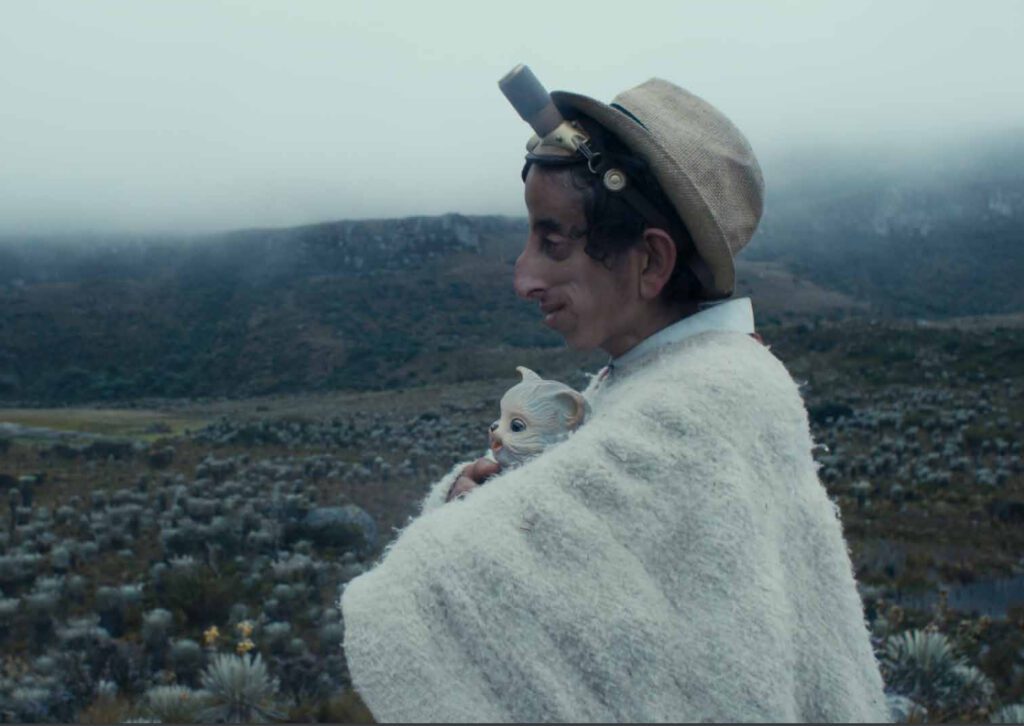
Augusto Sandino’s A Vanishing Fog is the first film to be shot entirely in the Páramo of Sumapaz, a large and mysterious páramo ecosystem located near Colombia and considered to be crucial to the western hemisphere. Sandino beautifully captures the scenery, leaving the viewer never wanting to be taken away from its visionary atmosphere. The movie itself, however, may leave some a little confused.
A Vanishing Fog is less of a movie and more of an experience. If you’re able to endure its bizarre imagery and sensory overload, its approach may win you over. If you want something that is simple and to the point, you may want to look elsewhere. That is not to say that Sandino’s film is bad. Its mind-boggling journey is worth it for the visual aura he creates, but he has a tendency to linger on certain aspects of the movie longer than necessary.
The main character is a man simply known as F (Sebastian Pii). He cares for his ailing father (Mario de Jesus Viana) and protects the ecosystem he inhabits. With no one else around and his daily routine taking a toll on him, F starts to drift. He begins to see things he desires and exhibits strange behavior. He wants to break free, but his commitments are holding him back.
It’s uncertain when the last time was that F has felt the embrace of a woman. But A Vanishing Fog makes it quite clear that it’s been a long time. Cutting strawberries in half only to lash his tongue with them – as if he’s performing cunnilingus – is just one way F expresses how much he wants a female counterpart. Sandino takes it further as the film progresses, making it an awkward and unpleasant watch at times.
War breaks out in the area that F and his father occupy. The only other human contact he has outside of his father is through a commander via radio, to whom he has to report daily. F’s isolation in the Páramo of Sumapaz takes a toll on his well-being, as does the assault on his home area. As time passes by, his quest for freedom seems to become less and less attainable.
So little dialogue is spoken throughout the film. With the exception of some English and a fictional language known as Sunapakún, the viewer is left to interpret what is happening through the visions Sandino creates. At times, journal entries and poems are scribbled across the screen. Other times, the characters don’t speak a word.
Sandino’s film is imaginative and bold but also frustrating in its execution. The haunting imagery and colorful, experimental approach work for the most part. But it also feels like Sandino gets a little too self-indulgent for his own good, and the experiment becomes more of a chore.